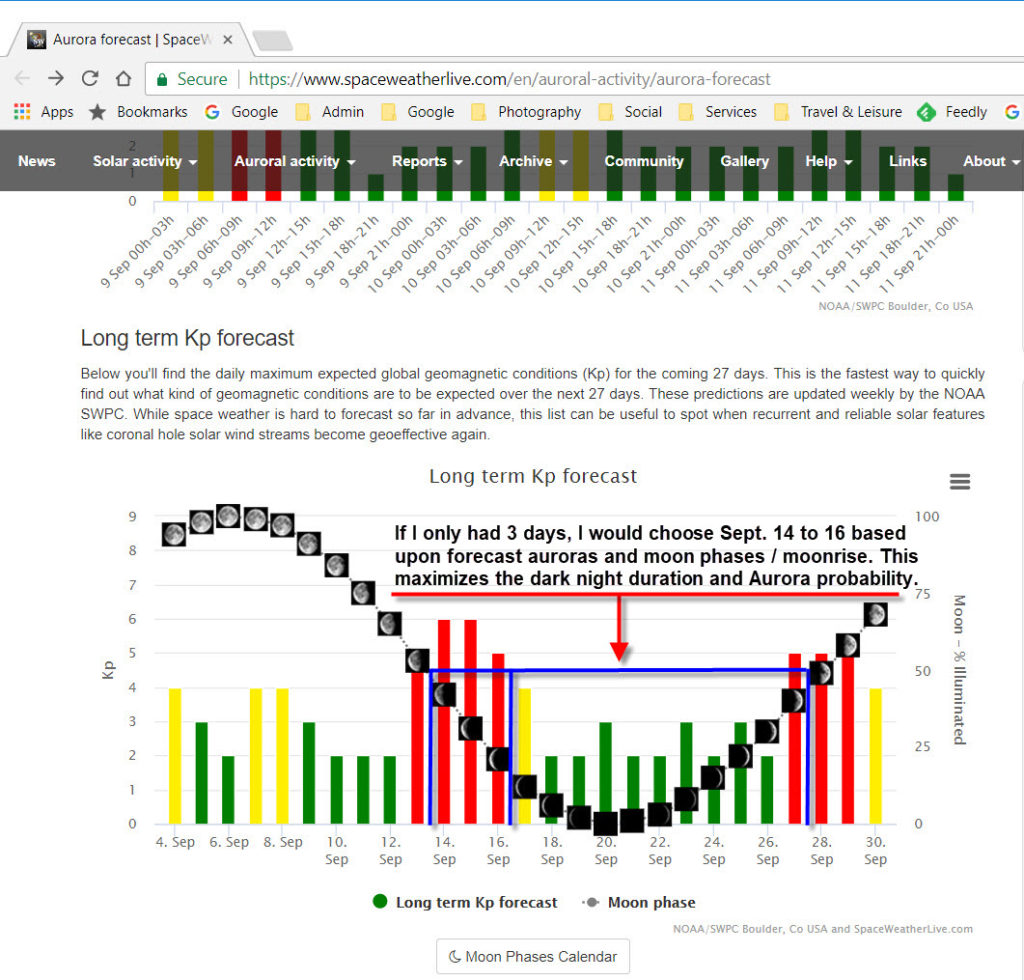Here is an educational Aurora Borealis post. If folks ask the question, will the Northern Lights be active on a certain date in the future, here is information which will help you with trip planning.
While some folks may have different opinions, if I were planning a trip to the Lake Superior Region, Alaska, Norway, Iceland, etc. with the hopes of also viewing the Northern Lights as part of that trip, I would take into account the following information before choosing trip dates:
- September would be my first choice of months due to increasingly longer nights, and stable weather.
- October and March would be my second choices for months as nights are long, but weather tends to be a bit more suspect … cloudy nights.
- Any other month between November and February, inclusive.
- I would avoid the Summer months due to short nights in terms of darkness, and no darkness if you travel far enough north. However, Northern Lights do dance in the Summer. I have personally watched great Aurora displays in northern Minnesota in early August (see example). True darkness at night occurs approximately between two hours after sunset and two hours before sunrise.
- I would browse to SpaceWeather.Com and check their 28 day cycle long range forecast (scroll down on page linked immediately below). I have included an annotated screenshot to show you what I mean.
- Remember, the sun’s cycle is about 29 days, while the moon is about 28 days. Long range Aurora forecasts are based upon the recent Solunar Cycles. If sunspots were occurring about 28 days ago, there is a decent chance there may be sunspot activity today. Sunspots with CME’s directed towards earth cause Auroras. (CME = Coronal Mass Ejection)
- If you have to plan more than 28 days in the future … choose dark nights (duration of dark sky each night plus moon phase) and stable months in terms of weather. Really bright moonlight tends to wash out the any possible good viewing of the Northern Lights.
 Follow me, Rich Hoeg, on Instagram.
Follow me, Rich Hoeg, on Instagram.

This is great info – very helpful! Thank you!
When you state, “Any other month between November and February, inclusive”…clarification please. Does this mean that most likely any evening we would be able to view the Norther Lights?
Linda … definitely not every night in the given period. The months noted are better due to light (length of darkness from sunset to sunrise) and weather conditions. One still needs a good Northern Lights, and as reviewed in the post nights w/o lots of moonlight. A period with or close to a full moon will mean much brighter conditions at night. A fullmoon’s reflective light off the snow is amazingly bright. The key points are you want long periods of darkness on nights w/o much moonlight. Stable weather patterns means fewer nights with clouds.